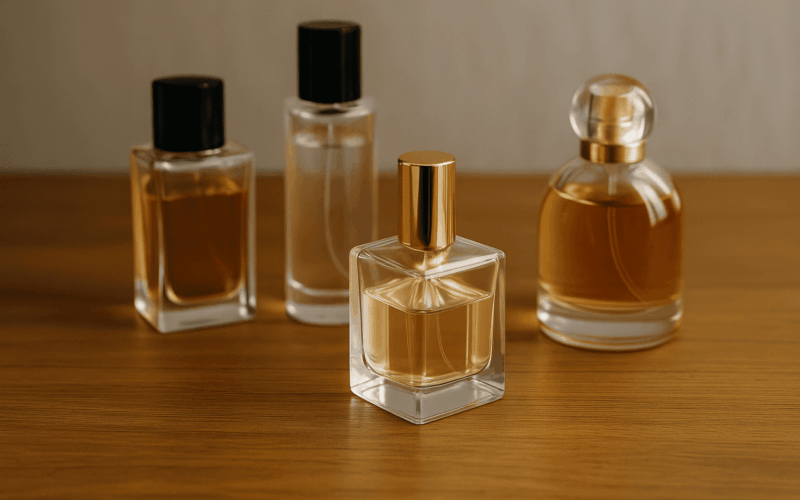Scents can weave our lives into mosaics. Some notes anchor us to routine, others ignite celebration, and a few remind us of journeys still ahead. Creating a perfume collection that responds to every situation isn’t about the number of bottles—it’s about building an architecture of impressions.
A fragrance wardrobe is like a roadmap: the clearer the directions, the freer you move through new territory. When scents don’t duplicate each other, every emotion finds its place. Below are six sections to help shape a flexible, thoughtful perfume set—without getting lost in endless options.
Defining your base axis: the daytime signature
The foundation of any collection is a signature fragrance—the one you can apply at 7 a.m. without hesitation, knowing it will elevate your presence. Choosing your base starts with honest reflection: what does your daily life smell like? If you work in a corporate open space, a quiet floral-green scent with soft diffusion makes sense. For freelance creatives with looser dress codes, a light leather or woody-spicy signature can express individuality without overpowering.
This base fragrance should also blend well with your grooming products. Test it over your usual lotion or shampoo—sometimes the wrong combination skews the composition with a soapy layer. Keep notes in a journal. After a week of wear, you’ll know if the scent feels truly harmonious or subtly draining.
Another key factor is temperature adaptability. Choose an eau de parfum concentration with a balanced alcohol-to-oil ratio. It will bloom warmly in cooler air and veil gently in heat. One bottle like this can span three seasons—just adjust the dosage.
Mood and occasion categories
Next comes breaking your collection into emotional needs. At a minimum, include a bright uplifting scent, an intimate skin scent, and a bold sillage perfume. The bright one should energize—think citrus, ozone, verbena. The skin scent is cozy, personal—like musk, cashmeran, or clean iris. The bold one is for being seen: amber, resins, spices.
To avoid repetition, record your fragrances in a table. List dominant ingredients and families. If two scents share bergamot in the top and jasmine in the heart, you may be overlapping. Assign a distinct character to each mood—so your collection plays like a symphony, not a solo.
When choosing bold perfumes, think about the space. A ballroom calls for a warm gourmand base like tonka and rum. A quiet art gallery suits incense or silvery lily—cool and reflective. Sound carries in scent, too.
Geography of scent: time of day and environment
The third layer is organizing by time and space. Morning calls for vertical notes that lift you: mint, green tea, ginger. Midday needs translucent hearts—like linden, peony, or sea salt. Evenings suit horizontal, textured notes: benzoin, patchouli, blackcurrant leaf.
Consider the architecture around you. High ceilings amplify airy compositions, while low ceilings suit warm, quiet perfumes. If you work in steel-and-glass spaces, bring in nature with cedar or fir—they soften echo-like acoustics. For home use in small rooms, keep scents gentle to avoid olfactory fatigue.
Don’t forget fabric type. Wool and cashmere hold fragrance longer than cotton. If your wardrobe favors soft textures, choose perfumes with clear structure to avoid “dustiness.” On silk, tobacco and leather shine: molecules release faster, leaving no heavy trail.
Rotation and care: maintaining balance
A balanced collection is dynamic—it needs tuning. Each season, conduct a shelf review. Move active fragrances forward, and store others in a dark cabinet at +15°C. This protects top notes from heat and light. Check spray mechanisms—if metal has oxidized, replace it before it taints the formula.
Keep a scent calendar. Mark when each fragrance was last worn. If a bottle sits idle for over three months, wear it for a day—it may no longer fit you, or it might surprise you. This habit prevents waste and helps curb impulse buys.
Don’t hoard—share. Swapping minis with friends broadens your experience without cost. If a perfume no longer resonates, gift it to someone who’ll love it. Perfumes should live, not gather dust. A collection’s worth lies in its movement, not its milliliters.
Adding new scents: testing and mindful choices
Before buying a new bottle, ask yourself three things: does it duplicate a category I already own? Does it suit the coming climate? And will it layer well with my base scent? To answer honestly, rely on these tools:
- a fragrance journal to track test notes
- 2 ml samples for three days of wear
- fabric swatches to test wash-out performance
- a timer to check the scent at 30 minutes, 4 hours, and evening
This method saves money and reduces regret. You’ll know exactly how the scent behaves in real life. For seasonal guidance, our article “Perfume by season: a guide to building your fragrance wardrobe” offers practical advice on scent-weather matching.
Questions and answers
Five to six varied perfumes can cover key life scenarios: work, leisure, evening events, sport, and intimacy.
Compare their pyramids and fragrance families. If two out of three levels match, they may feel redundant.
Try a sample first. If after a week it brings joy with every sniff, it’s worth owning the full bottle.

